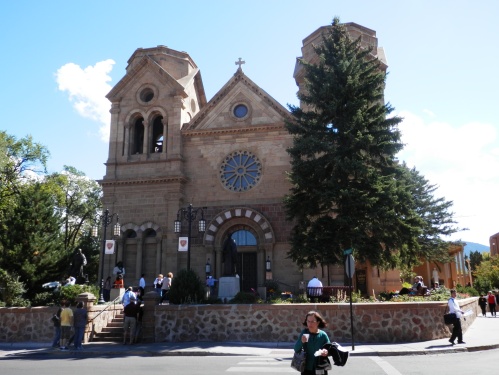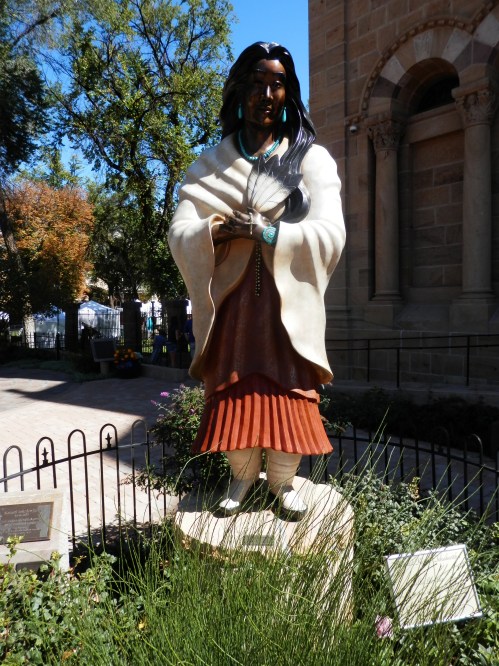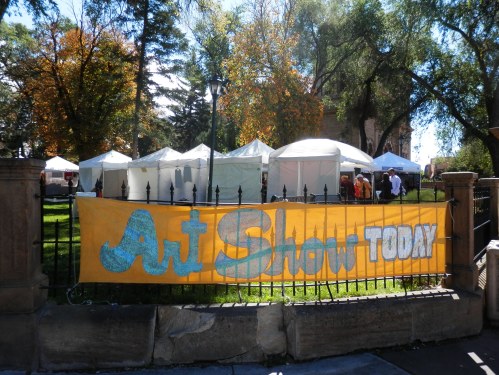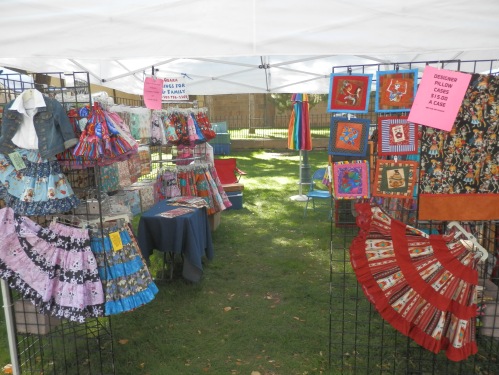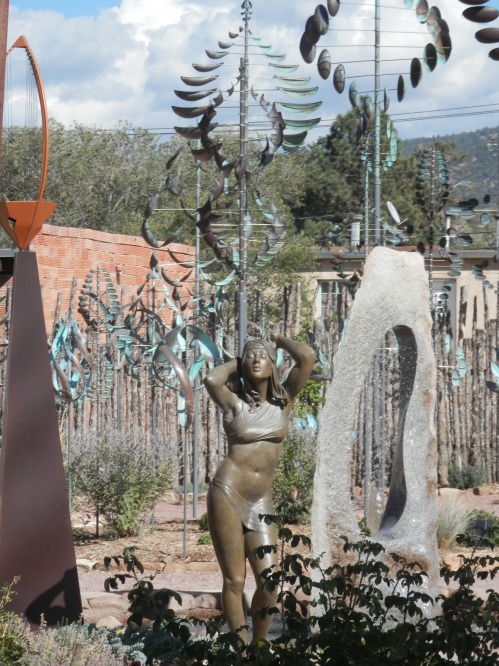Our visit to Monument Valley Navajo Tribal Park had been the most eagerly anticipated part of our road trip, and a week after we had flown into Las Vegas, the day had arrived.

Although today’s drive from Page, Arizona was only 104 miles, we were understandably anxious to get an early start to maximise our time in the Navajo Nation. So the trip to Glen Canyon Dam in the cool morning air was a brief one. Janet’s smile in the photo above pre-dated her discovery, several miles down the road, that she had left her Team GB baseball cap in the hotel.

Our customary diet of country and classic rock on the car radio seemed inappropriate for today, and we replaced it with Sacred Spirit II, More Chants and Dances of the Native Americans, the CD we had bought expressly for this leg of the trip. It was to play on endless loop for the next couple of days, lending a haunting, rhythmic backdrop to our travels.
As we headed east we began to encounter a sight that would become very familiar over the next ten days – tables by the roadside containing native american jewelery and, on occasions, pottery and rugs made by local people. Some of it might have been tourist “tat” but there is no doubting that the business is a valuable, even essential, addition to the local economy. On some stretches of road, however, there were as many abandoned as thriving stalls, though most still flying ragged American and Indian flags. More upscale trading posts, notably at Shonto, provided a shinier, and more expensive, face.
Much of US-98 through Kaibito and Shonto was scrub and desert with occasional homesteads and trailers dotting the landscape.
As we turned onto US-160 the amount of traffic increased, though as on this entire road trip, such statements are relative – it meant that we were joined by a handful of vehicles travelling in either direction. Congestion is almost an unknown concept in this land.

That said, a huge Lux Bux America bullied its way past several RVs ahead of us as we bypassed the Black Mesa mine and Navajo National Monument.
Our overnight stop, the Hampton Inn at Kayenta, was 24 miles south west of the tribal park and directly on the route. We reached it shortly after midday, and as it was three and a half hours before our booked tour, we called in to check whether our room might be ready. After a half hour wait, during which we availed ourselves of the complimentary tea and coffee, we placed our luggage in the room and set off for Monument Valley.
Careful to avoid the cattle and horses grazing by the roadside, we took US-163, one of dozens of ramrod straight roads on this trip, joining a steady procession of tourist buses and Cruise America RVs intent on witnessing the archetypal western landscape. Low rise homes of brick and wood mingled with churches, including the Living Word Assembly of God and Jehovah’s Witnesses, and health, recreation and animal care centres before the scenery took on the familiar look of desert, sagebrush and isolated, thrusting buttes.
The mood in the car of approaching awe and solemnity was briefly shattered as a sign proclaimed that the highway had been adopted by “the family of Jimmy Krank” (this reference will sadly be lost on my American readers).

We entered Tsi-Bii-Ndzisgali, the Navajo for Monument Valley Navajo Tribal Park meaning “the valley within the rock” ,with an hour and a half to spare. Although we were hungry we were more desperate for our first live view of that most iconic of movie locations. We may have seen it a hundred times on screen but nothing can prepare you for encountering it laid out before your eyes for the first time.

And there it was! The official leaflet proclaims it the “8th wonder of the world”. Those that have seen both compare it with the Pyramids at Giza, and the majority declare that it surpasses its Egyptian counterpart. I am content to take their word for that. Surely Wordsworth was stood here rather than gazing at Westminster Bridge when he declared “earth could not pass by a sight so touching in its majesty”.
Curiosity sated, our attention turned to lunch. Built less than four years ago in a style and colour sympathetic to its age old neighbours, the View Hotel provides luxury accommodation and stunning views. We found a table by the picture window overlooking the East and West Mittens and Merrick Butte, John Wayne’s favourite view, and ordered Navajo Tacos, fry bread with ground beef, pinto beans, onion and lashings of lettuce and cheese. Janet had the good sense to ask for the small plate whilst I succumbed to gluttony and had the large version, to the amusement I recall of the server, a decision I almost came to regret on the helter-skelter jeep ride in the backcountry later in the afternoon.
We assembled in the foyer of the hotel to await our guide. As the appointed time approached it appeared that we might be the only people on the tour. However, we were joined by another British couple and a mother and son from New York. Larson, from Navajo Spirit Tours, appeared shortly afterwards to advise us that our guide, Miesha, was running a few minutes late and engage us in some ice breaking conversation.

Once Miesha had arrived and introduced herself, she drove us to the traditional hogan village, a group of sun-baked mud covered homes, built in harmony with the universe and all living creatures on earth. The large one in the picture, a female hogan, is used as a permanent home, and represents love, peace and kindness, whereas the smaller, conical version, the male hogan, is the location for ceremonies and for war plans to be drawn up (though not for some time I hope). Aside from their spiritual significance, they perform another valuable function in that they retain heat for long hours in the winter and can be 25% cooler than the outside temperature in the summer.

Our next stop gave us close up views, or as close up as visitors are, rightly, allowed to be, of the classic triumvirate of the East and West Mitten Buttes and Merrick Butte as well as satisfying any retail urge we might have retained with a dozen or more tables displaying Navajo rings, necklaces, earrings and bracelets.

With the notable exception of the aforementioned, the most famous viewing spot in the valley is John Ford’s Point, the place where the great movie director, whose catalogue includes Stagecoach, She Wore A Yellow Ribbon and The Searchers, would spend hours contemplating his life and work. More stalls and a caravan selling fry bread and cold drinks completed the scene. The lone cowboy in the photo above appears periodically to enable visitors to satisfy their fantasy still further.

The selling point for this particular tour had been the excursion into the restricted areas of the valley. The self-drive and basic tour options focused purely on the more familiar areas. We were heading into the back country! Shortly after leaving John Ford’s Point we turned off the well trodden road down a narrow path out into the area bounded by the Rain God, Thunderbird and Spearhead Mesas.
The journey was reminiscent of the previous day’s bone-breaking ride to Antelope Canyon as Miesha made the jeep lurch in and out of the dry, rutted terrain. But she delivered us into a quiet, magical expanse that seemed far removed, even from the vistas we had marveled at only a few minutes before.

Here we encountered wild horses, a small party on horseback on a day’s trail, spectacular rock formations and sporadic lush vegetation – and, above all, blissful peace.

We were afforded the opportunity to see close up some of the most celebrated, but less often seen, sights of the valley, including the Totem Pole and Suns Eye (both pictured below).

It is perhaps at this point that I should say a little more about the Navajo in general, and Miesha in particular.
Much of the appeal for me of this road trip had been the opportunity to witness both the landscape and culture of the native american, primarily Navajo, people first hand. But everything I had read in preparation cautioned the visitor on how to interact with them. I was a guest in their land, an impoverished one in many respects. My hosts held deep spiritual beliefs that were far from the mainstream of American life. Some individuals might be difficult, taciturn, even hostile.
It was essential, therefore, to interact with respect and humility – which I hoped I would have done without the friendly warning.

I can only say that I did not have a single conversation or transaction with a Navajo throughout the trip that was not friendly and respectful. Our guide in Antelope Canyon, Rosie, could not have been more helpful or informative. Every restaurant server, trading post or stall owner greeted us with a smile and showed an interest in where we came from and what we were doing in their country and were grateful that we were. Of course, they were aiming to part us from our money at the same time, but that never seemed the primary motivation.
Not only are their beliefs about nature and man’s duty towards it, highly attractive, and ones that western man had largely forgotten, but on an individual basis they were a joy to deal with, on this day and the coming days wherever we went.

Ah yes, Miesha.
When we first met her, and were about to board her jeep, she outlined the three hour tour we were about to embark upon. Ever smiling, quietly spoken, a little diffident perhaps with a girlish giggle at the end of most sentences, she was nonetheless authoritative and immediately gained my confidence.
Not only did she recount the history, myths and, of course, movie relevance, of each sight in the valley, but she regaled us too with stories about her life and that of her family, bringing out the basic principles of the Navajo way of life such as respect for nature, balance in all things, and one that struck me as so contrary to our British and American prejudices – reverence for the wisdom of old age (her grandmother was 99).
Everything she said reinforced her commitment to these principles. A modern 21 year old woman but one deeply rooted in the Navajo life. Hugely talented, she had traveled far with her flute playing and singing. Indeed, her rendition of two songs, one in Navajo and the other in English, whilst her small tour party lay on their backs looking up through Suns Eye, was the most affecting moment of the whole trip for me.
She even made a vain attempt to teach us some Navajo! I think Janet and I did get top marks as we did already know Diné (the people)!
A’he’hee Miesha!

Read Full Post »















